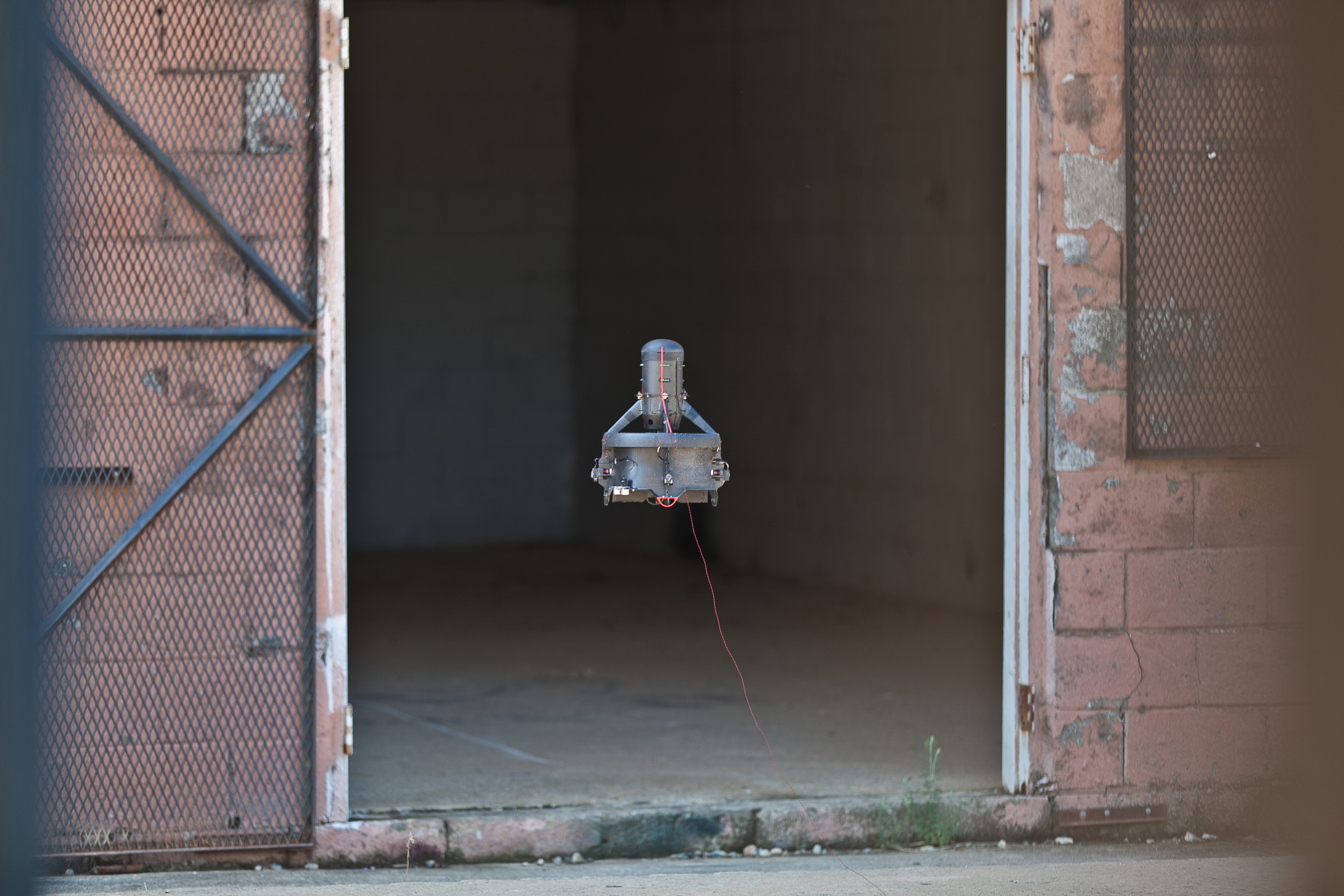CyPhy Works’ Micro Drones Will Follow You Indoors
Unmanned Aerial Vehicles (UAVs) or drones are an increasingly important part of the U.S. military’s strategy. Much smaller “micro-UAVs could soon follow soldiers, police officers and other emergency personnel inside buildings, too. A startup called CyPhy Works, which came out of stealth mode today, has developed two such micro UAVs for military and emergency service use.

The Extreme Access System for Entry (EASE), shown above, resembles as flying desk lamp; it can hover into a building while relaying high-definition video footage to an operator outside via a tether. A slightly larger UAV, a quadrocopter called the Persistent Aerial Reconnaissance and Communications (PARC), can fly up to 1,000 feet above ground.
Here’s a video of the EASE system in action:
CyPhy Works says the benefit of using a tether, or “microfilament” as it calls its cable, is that it doesn’t suffer interference, cannot be jammed, and can deliver high resolution footage back to the controller.
Notably, the CEO of CyPhy Works is Helen Greiner, who along with MIT professor Rodney Brooks previously cofounded iRobot, a company that makes many different military robots, as well the Roomba vacuum robot cleaner.
The ascent of military’s UAVs has been dramatic. Today, thousands of UAVs are used by the military in Afghanistan and elsewhere, ranging from high- and medium-altitude fighter-jet-sized aircraft like the RQ-4 Global Hawk and MQ-1 Predator, to small model-aircraft-like vehicles such as the RQ-11 Raven, which can be carried by soldiers and used for short-range reconnaissance. This boom has spawned new UAV makers, and the Federal Aviation Authority is currently drawing up rules that will allow for much wider use of civilian drones inside the United States.
Keep Reading
Most Popular
Large language models can do jaw-dropping things. But nobody knows exactly why.
And that's a problem. Figuring it out is one of the biggest scientific puzzles of our time and a crucial step towards controlling more powerful future models.
How scientists traced a mysterious covid case back to six toilets
When wastewater surveillance turns into a hunt for a single infected individual, the ethics get tricky.
The problem with plug-in hybrids? Their drivers.
Plug-in hybrids are often sold as a transition to EVs, but new data from Europe shows we’re still underestimating the emissions they produce.
Google DeepMind’s new generative model makes Super Mario–like games from scratch
Genie learns how to control games by watching hours and hours of video. It could help train next-gen robots too.
Stay connected
Get the latest updates from
MIT Technology Review
Discover special offers, top stories, upcoming events, and more.